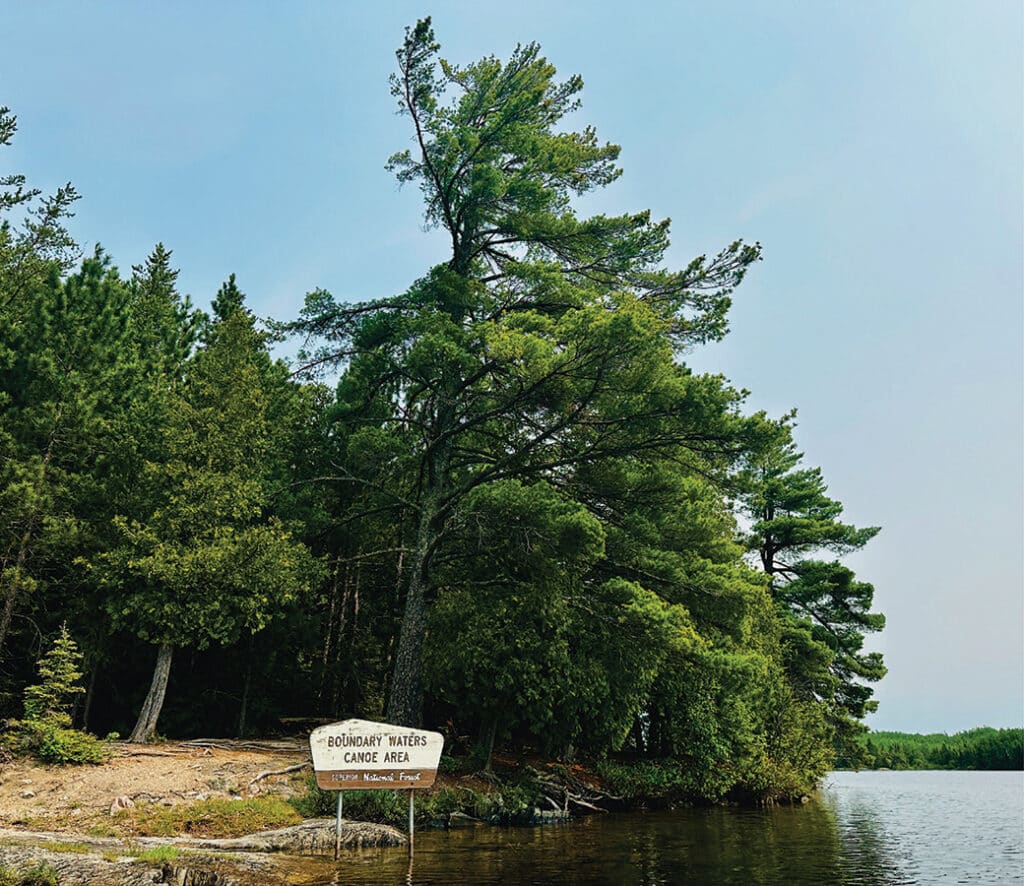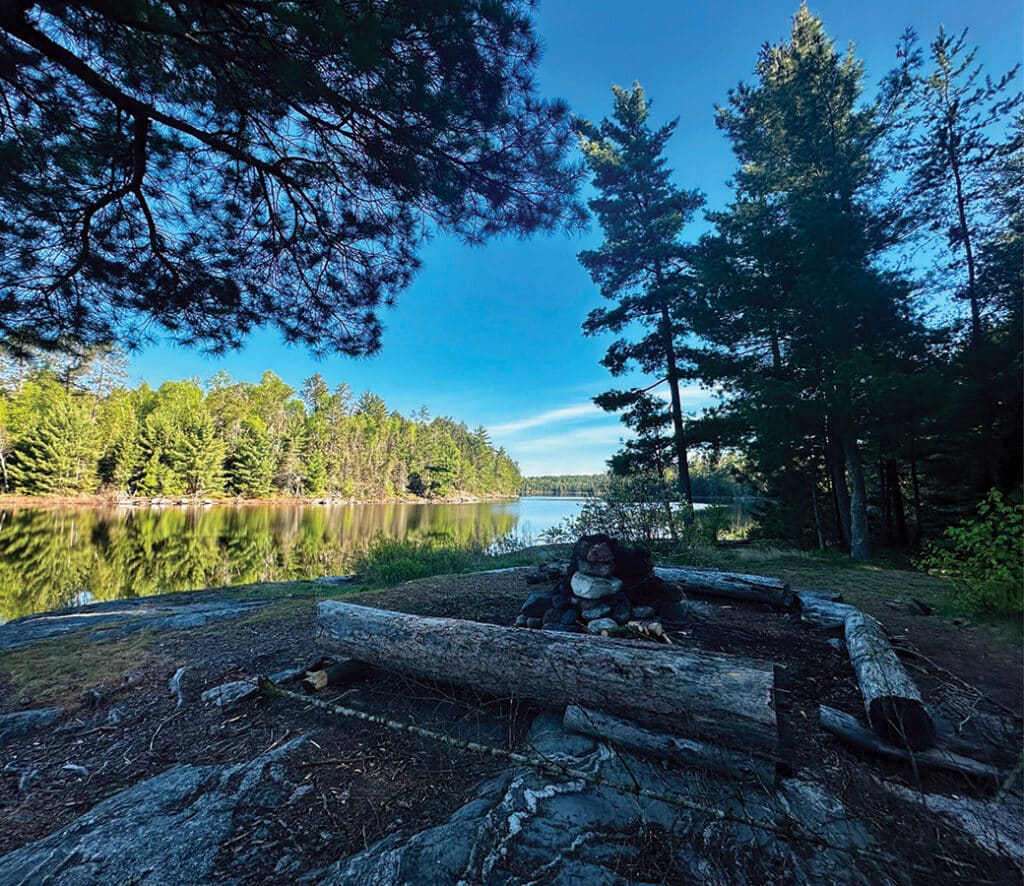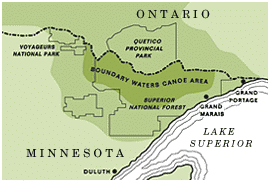
The U.S. Forest Service–Superior National Forest is inviting public comments on a proposal to increase recreation fees in the Boundary Waters Canoe Area Wilderness (BWCAW). The Forest Service would use the additional revenue to improve campsites and portage trails, expand outdoor education programs, and support Search and Rescue operations.
Most visited Wilderness in the U.S.
Covering 1,090,000 acres, the BWCAW is recognized as the most visited wilderness area in the United States. It stretches 150 miles along the US-Canada border and shares its western boundary with Voyageurs National Park. Each year, around 150,000 people visit the BWCAW for overnight and day-use trips. Throughout the boreal forest, there are 2,000 designated first-come, first-served campsites and 1,200 miles of canoe routes. In addition, there are roughly 200 miles of hiking trails.
The Forest Service estimates that the BWCAW supports a $100 million annual recreation-based economy. As a result, gateway communities along the boundary rely heavily on the tourism and spending that the wilderness generates.
Fee increase
All visitors are required to reserve a permit to enter the BWCAW year-round. During the quota season (May 1 through September 30), adult visitors currently pay $16 per trip, while youth pay $8. Additionally, each reservation includes a non-refundable $6 fee.
If the proposal moves forward, the Forest Service will increase the fees to $40 per adult and $20 per youth (ages 0–17) per trip. “Fees will allow the Superior National Forest to hire Wilderness Ranger vacancies to catch up on over $11 million in maintenance backlog” in the BWCA, said forest spokesperson Joy VanDrie according to MPR News.
Last year, the agency increased fees within the Superior National Forest due to rising staffing, maintenance, and operational costs. These changes impacted eight developed campgrounds and one reservable cabin.

Public invited to weigh in
Under the Federal Lands Recreation Enhancement Act (passed by Congress in 2004), the Forest Service retains 80% of collected recreation fees for on-site improvements. The agency plans to use the additional funds to upgrade campsites, replace latrines, and maintain portage trails. Some of the revenue will support hiring additional staff and the costs of Search and Rescue. Three squads from Cook, Lake, and St. Louis counties actively work together to cover the entire Arrowhead region. According to the agency, higher fees will help improve recreation opportunities and support a more sustainable recreation program for future visitors.
To share more details and answer questions, the USFS will host two in-person open houses and one virtual session:
- July 14, 4–6 p.m. at the Kawishiwi District Office in Ely, MN
- July 22, 4–6 p.m. at the Gunflint District Office in Grand Marais, MN
- July 15, 4–6 p.m. via Microsoft Teams (virtual)
People interested in attending are directed to the Superior National Forest’s website for meeting links and location details. The public can submit comments until September 2, 2025. After evaluating the feedback, the Forest Service will incorporate it into the final proposal, which will be reviewed by the Regional Recreation Resource Advisory Committee (RRAC). The Forest Service plans to announce decisions regarding fees in January 2027.
More info:
- Provide Comment on Boundary Waters Canoe Area Wilderness Fee Proposal – USFS-Superior National Forest
- Forest Service proposes to more than double Boundary Waters fees- MPR News

